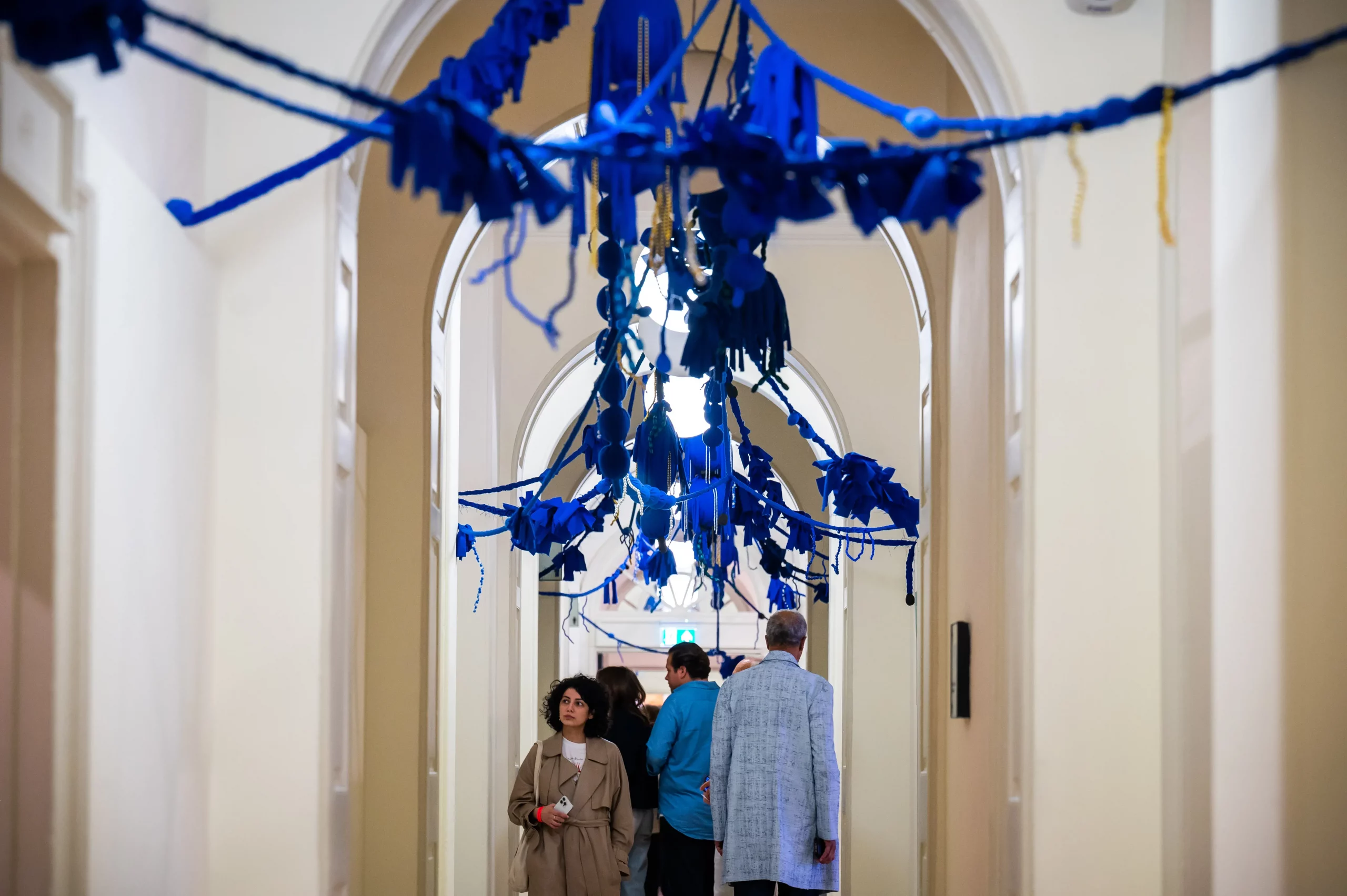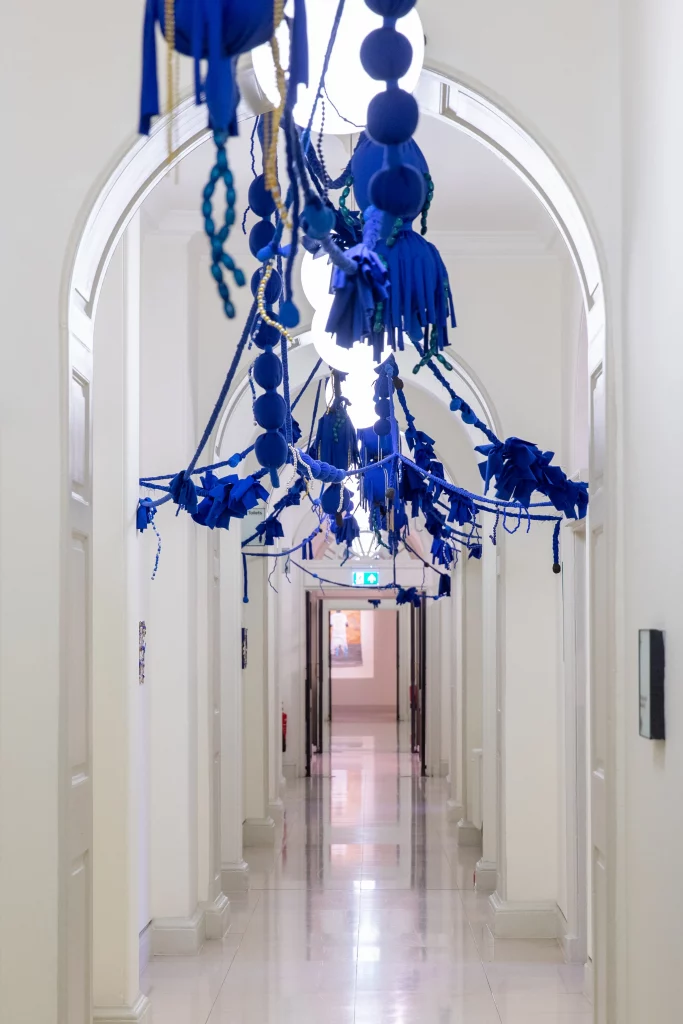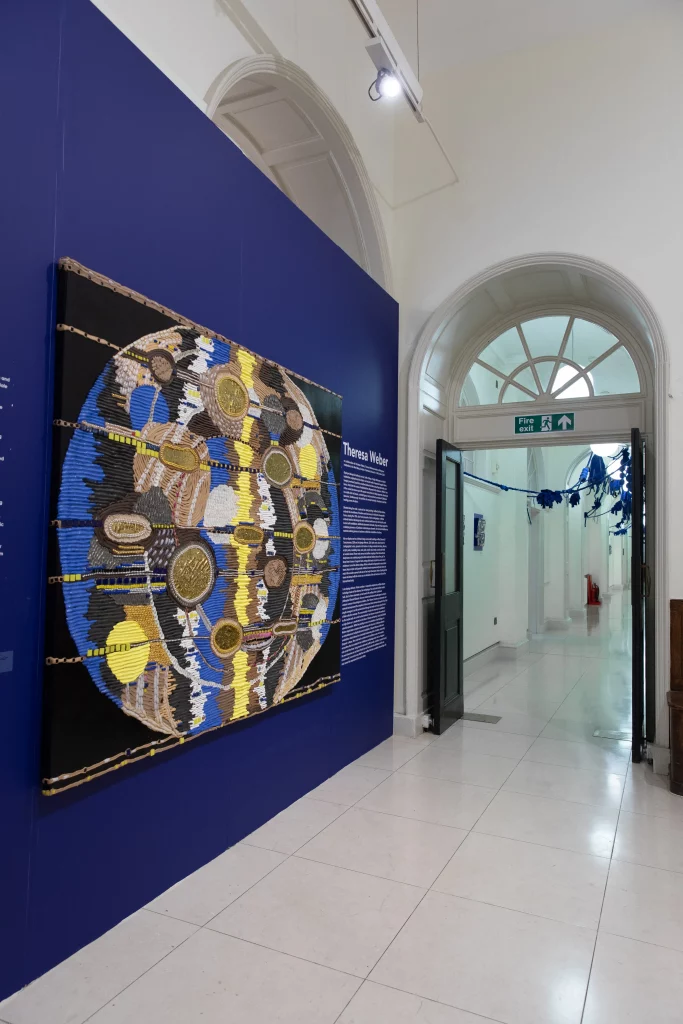
Fruits of Hope / Indigo Rhizome,
1-54 Contemporary African Art Fair Special Project with October Gallery,
West Wing Corridor,
2024
Displayed along the hallway arches, “Fruits of Hope / Indigo Rhizome“ (200 x 2500 cm) is a vibrant installation sculpted from blue fabric and mixed media. Suspended organic forms hanging overhead burst into a braided network of interconnecting rhizomatic root forms, which link the nodes of individual lives dispersed in the diaspora. Weber’s use of the colour blue draws upon the power associations of Indigo pigments, referring to its position as a status symbol in Europe, and its colonial legacy and production by enslaved Caribbean labourers. Simultaneously, the fruit-like orbs evoke femininity, abundance and the healing powers of nature.
Situated along the walls, a series of ten ‘relief paintings’ entitled “Haiti Revolution“ (30 x 30 cm), embody the revolutions of Freedom and Democracy in Haiti and subsequently France, during the 1790s. Each work presents a fictive cartography, as Weber embeds historical drawings into resin combined with foam clay and acrylic paste. Across both installations, additional adornments of beads, clips and rings suggest the underlying presence of Caribbean carnivalesque elements. The Carnival tradition has nurtured enduring powers of resistance within diasporic creole cultures.
In Archipelago Network, Weber creates a composition inspired by multiple shapes including a fusion of the rhizome, the archipelago, the coral reef and the double helix. Each of these elements can be found in the writing of the Caribbean philosopher Édouard Glissant, who uses natural symbols and landscapes in order to analyze nuances of sociological conditions. The ‘rhizome’ is seen as a dynamic root network that represents the complex of interconnections between diasporic lives, that despite changes in locality remain linked through ancestry and carry equal traces of their collective memory. The commonality of collective memory is symbolized by the double helix. As a multi-rooted network, the rhizome counters the notion of a single fixed root – predicated on the idea of ‘blood and territory’ which facilitated colonial expansion. Within the painting we see a visualization of an archipelago, as Weber adopts these complex island landscapes to reference Caribbean islands as embodiments of multiplication and creolization. Glissant defined the term creolization, which speaks to the constantly transforming state of culture, especially diasporic cultures. The coral reef is a reference to maritime areas and complex ecosystems that are related to the Caribbean archipelago and can be mapped onto social structures. Using mosaic elements (artificial nails, marbles, mosaic stones) the work becomes an archive of body traces that locate the individual within an environment, in such a way that the two entities are constantly interacting with and inseparable from each other.
Text by Eleri Fanshawe
Photo by Yannick Lalardy
Curation by Eleri Fanshawe


